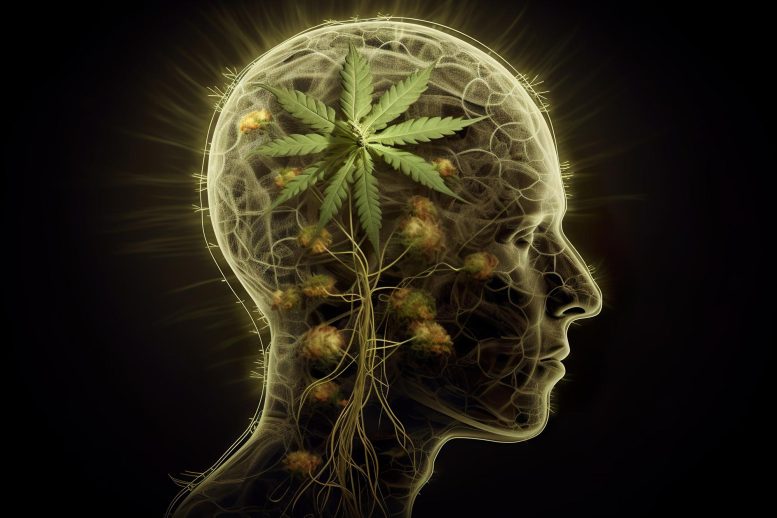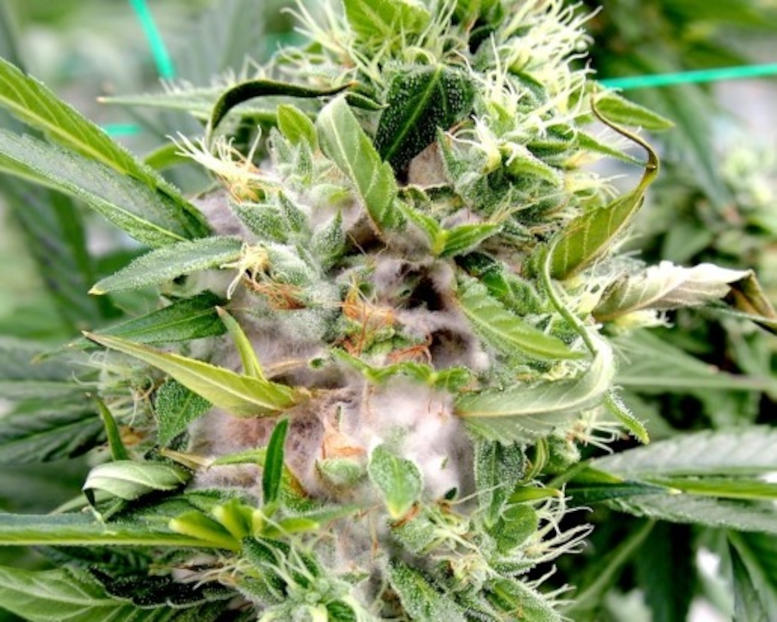
A recent study highlights the potential health risks of cannabis use due to harmful fungi contamination, underscoring the need for more research and better regulations. This study calls for greater attention to fungal contaminants in cannabis and hemp, particularly for immunocompromised consumers, and suggests a two-tier system for medical and recreational products to ensure safety.
A group of researchers recommends additional investigation and assessment of guidelines for the medical application.
Cannabis, even when used for medical reasons, could make some people sick due to harmful fungi that contaminate the plants.
That is the finding of a recently published peer-reviewed journal article, whose authors recommend further study and consideration of changes to regulations to protect consumers, especially those who are immunocompromised. They examined data, previous studies, and U.S. and international regulations related to the cannabis and hemp industry.
The article was published in Frontiers in Microbiology. It was researched and written by Kimberly Gwinn, professor of entomology and plant pathology at the University of Tennessee Institute of Agriculture: Maxwell Leung, assistant professor, and Ariell Stephens, graduate student, both from the School of Mathematical and Natural Sciences at Arizona State University; and Zamir Punja, professor of plant pathology/biotechnology at Simon Fraser University, Burnaby, British Columbia, Canada.
Understanding Cannabis and Hemp Pathogens
“Hemp and cannabis are new crops, and we are in the early stages of understanding relationships with their pathogens. Several pathogens produce mycotoxins, compounds that negatively impact human health and are regulated in other crops. In this review, we summarize the current literature on mycotoxins in hemp and cannabis products, identify research gaps in potential mycotoxin contamination in hemp and cannabis, and identify potential developments based on research in other crop systems,” Gwinn said.

Mature cannabis inflorescences exhibit a large floral structure that is composed of female reproductive organs (pistils), inflorescence leaves, and the bracts surrounding them. Credit: Photo from Frontiers in Microbiology, courtesy of Z. Punja
Cannabis research has mostly focused on the substance and medical uses of the plant, but with the increased legalization of cannabis for various uses, this article addresses the need for more study of potential health risks.
Fungal Contaminants and Health Risks
“Although fungi and mycotoxins are common and well-studied contaminants in many agricultural crop species, they have been generally under-studied in cannabis and hemp. This is partly because human health risk assessment methodologies used to regulate food and pharmaceuticals have yet to become standard for the emerging cannabis and hemp industries. Additionally, the wide range of consumer uses of cannabis and hemp flowers, including for medical use by patients with susceptible conditions, makes it uniquely challenging to assess and manage human health risk of these contaminants,” according to the article.
The authors discuss Aspergillus, Penicillium, Fusarium, Mucor, and other fungi that can infect the plants and can produce mycotoxins; review the regulations and assessment methods of the contaminants; and offer recommendations to produce safer products for all consumers. Environmental factors such as where the plants are grown, whether indoors or outdoors, and in soil or soilless media, may impact the kinds of contaminants and ensuing health risks.
Vulnerable Populations and Contamination Risks
Studies reviewed by the authors show some fungi may cause infection in lung and skin tissues, and these infections were most common when smoked and less common in edibles. They also found cancer patients using cannabis to help with nausea and appetite as well as transplant patients and consumers with HIV and type 1 diabetes may be particularly susceptible to infection. Studies also show workers harvesting cannabis could also be at risk. The authors encouraged consumers who are immunocompromised to use products that have been sterilized until better data are obtained.
The authors studied international and U.S. standards for these contaminants, but there is a lack of data on the prevalence of the contaminants and their health impacts. Another issue for consumers is the varying levels of legalization of cannabis products from state to state, which has resulted in each state creating its own regulations. Fusarium mycotoxins, a prevalent class of fungal contaminants in agricultural commodities that can result in vomiting, are not currently regulated.
Assessing and testing for pathogens can be problematic, as the authors found when they studied various methods including culture-based assays, immuno-based technologies, and emerging technologies. The article also examines the management of the possible toxins before harvest and after harvest. “A major hurdle faced by cannabis and hemp industries is addressing the disconnect between production-related issues and human safety issues,” the article states. Recreational use of hemp and cannabis is common in many areas and all case studies linking cannabis use and fungal infections, except one, involved patients who were immunocompromised. The authors suggest a potential solution is “to reduce potential harm to medical users of cannabis from toxigenic fungi is to develop a two-tier system that distinguishes products intended for medical and recreational use.”
“We wrote this article to bring these issues to the attention of the scientific, medical, and regulatory communities. We hope to encourage further research in this area, particularly in the areas of mycotoxins in products. Better data and public access to data will allow us to fully evaluate these risks and subsequently ensure safe products for consumers,” Gwinn said.
Reference: “Fungal and mycotoxin contaminants in cannabis and hemp flowers: implications for consumer health and directions for further research” by Kimberly D. Gwinn, Maxwell C. K. Leung, Ariell B. Stephens and Zamir K. Punja, 4 October 2023, Frontiers in Microbiology.
DOI: 10.3389/fmicb.2023.1278189
The study was funded by the National Institute of Food and Agriculture.









The hemp plant has been used for thousands of years. Apparently a covid vaccine can be produced in weeks, whereas hemp, welll, we still don’t know. RUBBISH
Oregon already requires ALL magic-green-herb products sold for human consumption be tested for fungi and be certified free of it. And they require organic growing methods so you are not smoking agent-orange and other carcinogenic chemicals, like they put on your corn and tobacco.
ALL states should require this, but most only care about the taxes they can extort, not about protecting citizens health or freeing their bodies from government control.
“Potential Health Hazard in Cannabis”, no, it’s a health hazard ON cannabis.
“Hemp and cannabis are new crops”, no, they’re just new to Gwinn because cannabis has been banned in Tennessee for over a century. Ingesting any rotting crops is unwise, unless it’s intentionally fermented, and the National Institute of Food and Agriculture should already be well aware.
The study authors seem well-intentioned and honest about a potential pathogen. The funding may have been also, if concerned about maximizing crop growth and safety. The write-up starts with scare tactics, in the style of evening news “What you don’t know may kill you” stories.
Finally, where the “authors recommend further study and consideration of changes to regulations to protect consumers”, those authors should study the Canadian legalization of cannabis. In Canada, regulated cannabis is produced in a rush by novices, so governmnent-approved cannabis has had constant recalls due to molds bacteria allergens and toxic pesticide contaminants causing illness, while the unregulated black-market product has remained safe. I suggest reconsidering the political aim with those disgusting results in mind, and instead consider how to inform consumers in a free market.
More drug war propaganda.
Yeah probably, the write-up starts as propaganda anyway. However, the intent of the National Institute of Food and Agriculture, and of the authors (entomology and plant pathology experts), I think seems to have been how to grow the most and best cannabis safely. I think even you and your son could get behind that excellent goal.
this article addresses the need for more study of potential health risks. … Meaning it’s a cash grab.
I’ve been smoking since I was 13 and am 63 now, and am in good health.
Who funded this study? I bet it was big pharma and the alcohol lobbies. Any time that a valued and trusted substance infringes on the money that they rake in, they mysteriously find “new evidence” of some crap that may sway the forward thinking of others.
I’m so glad I live in Oregon that has some of the most stringent regulations in the country on what they are allowed to sell us.
I don’t understand why the authors of this article don’t understand that rotting happens to all plant matter and that consumers are waaaay more likely to get sick from lettuce than the Devil’s lettuce.
What a giant scare tactic. All states should probably follow Oregon’s regulations to keep consumers safe.
I’m not suggesting we don’t look for harmful agents in the products we consume but ALL I SEE from the scientific community is relic drug war propaganda.
Why aren’t we taking this plant apart and really studying the complex layers of benefit the plant can offer and putting it next to the negatives. The negatives (aside from psychosis) could be caused by smoking any plant matter. The toxins referenced in this article (as someone in this thread mentioned) are on the plant not of it.
It just feels like the science behind these articles us intentionally geared to find some reason to undermine the people’s initiatives to legalize the plant with negatives that could happen to any plant.
Meanwhile we have a constitutionally protected ability to drink ourselves to death.
I doth smell industry money behind these studies. A whiff of big alcohol rounded out by a full nose feel of pharmaceutical money.
This plant could help with many of our ailments. It helps control epilepsy and ffs could help fight cancer and chronic pain but let’s knock it on the head instead of suggesting more regulation.
Great Post! The discovery of potential health hazards in cannabis, even within the medical context, necessitates a comprehensive and evidence-based approach. It calls for ongoing research, clear regulatory frameworks, and effective communication to ensure that medical cannabis is used responsibly and safely, maximizing its benefits while minimizing potential risks.